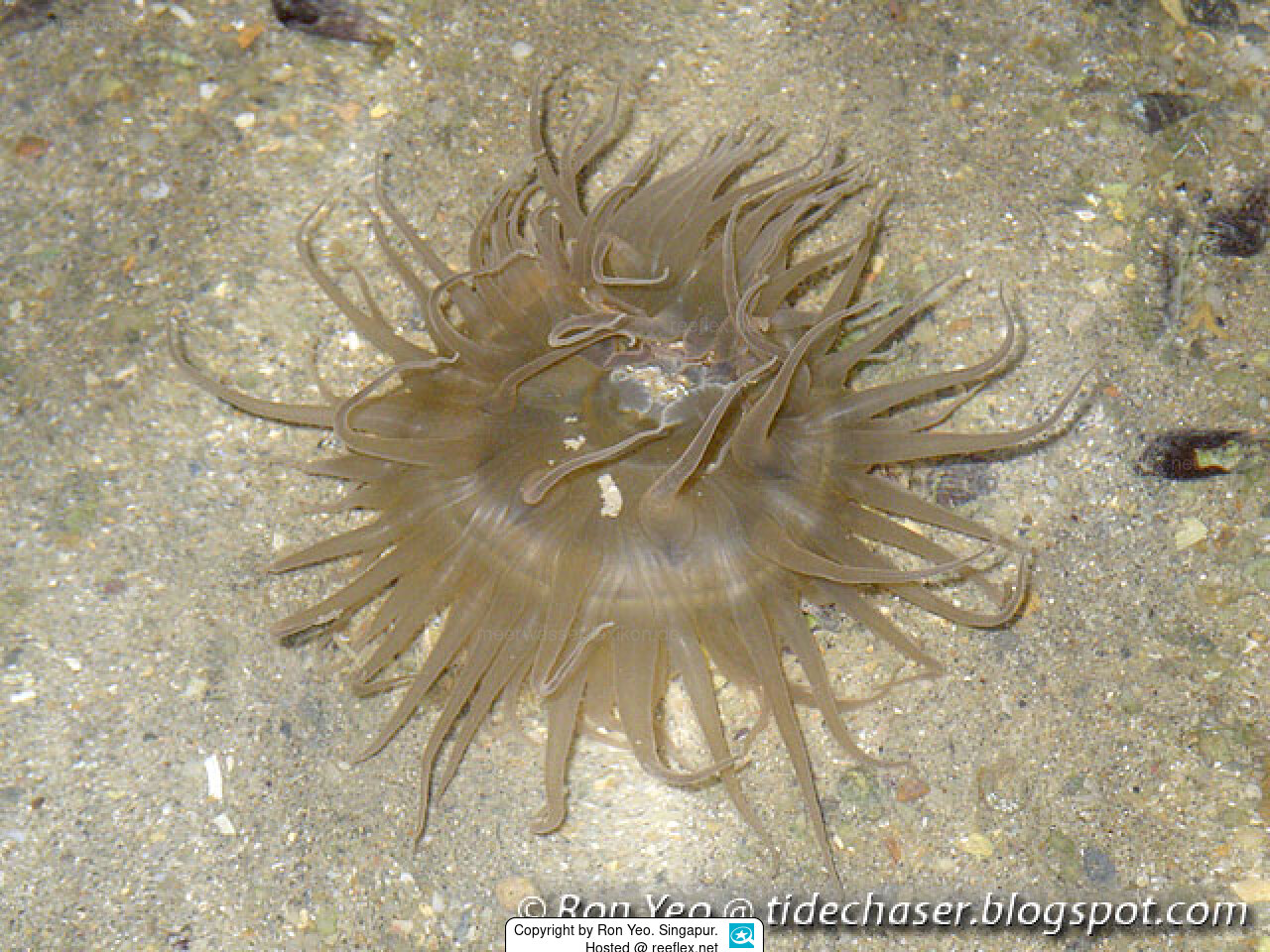Info
Carlgren, 1934
Paracondylactis sinensis is a large and somewhat inconspicuous, beige-colored anemone with mostly slightly greyish tones on its tentacles and oral disc.
The anemone reaches a diameter of 5 - 8 cm with the tentacles spread out, it has many long, thick, pointed tentacles that are translucent, usually unpatterned and beige or pink in color.
The oral disk can sometimes be slightly darker than the tentacles, it has mesenteric attachments that are visible as dark lines.
The body column is smooth and without unevenness and gradually tapers towards the base, it can be between 12 - 14cm long, out of the water the anemone retracts its tentacles into the body column. Its 96 tentacles are arranged in five cycles around the mouth
The anemone's mouth has two siphonoglyphs.
Habitat. Deeply buried in the muddy sand of the intertidal coast of Clifton, with the oral disk held to the sand surface.
Paracondylactis sinensis also occurs in silty sandy areas near seagrass beds on sheltered shores, in sandy man-made swimming lagoons and around intertidal rocks.
Special feature: The anemone is edible and is not a symbiotic anemone.
Synonyms:
Paracondylactis davydoffi Carlgren, 1943
Paracondylactis dawydoffi Carlgren, 1943
Paracondylactis indicus Dave in Parulekar, 1968
Paracondylactis sagarensis Bhattacharya, 1979
Paracondylactis sinensis is a large and somewhat inconspicuous, beige-colored anemone with mostly slightly greyish tones on its tentacles and oral disc.
The anemone reaches a diameter of 5 - 8 cm with the tentacles spread out, it has many long, thick, pointed tentacles that are translucent, usually unpatterned and beige or pink in color.
The oral disk can sometimes be slightly darker than the tentacles, it has mesenteric attachments that are visible as dark lines.
The body column is smooth and without unevenness and gradually tapers towards the base, it can be between 12 - 14cm long, out of the water the anemone retracts its tentacles into the body column. Its 96 tentacles are arranged in five cycles around the mouth
The anemone's mouth has two siphonoglyphs.
Habitat. Deeply buried in the muddy sand of the intertidal coast of Clifton, with the oral disk held to the sand surface.
Paracondylactis sinensis also occurs in silty sandy areas near seagrass beds on sheltered shores, in sandy man-made swimming lagoons and around intertidal rocks.
Special feature: The anemone is edible and is not a symbiotic anemone.
Synonyms:
Paracondylactis davydoffi Carlgren, 1943
Paracondylactis dawydoffi Carlgren, 1943
Paracondylactis indicus Dave in Parulekar, 1968
Paracondylactis sagarensis Bhattacharya, 1979







 Ron Yeo. Singapur
Ron Yeo. Singapur



